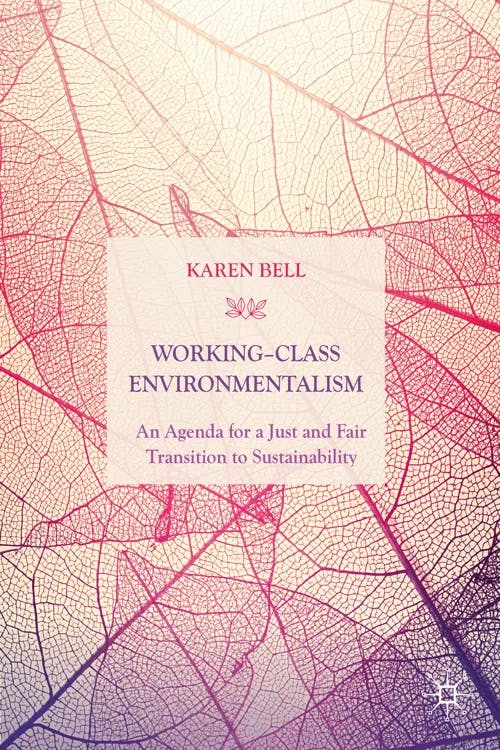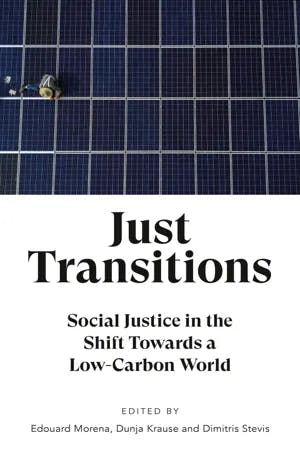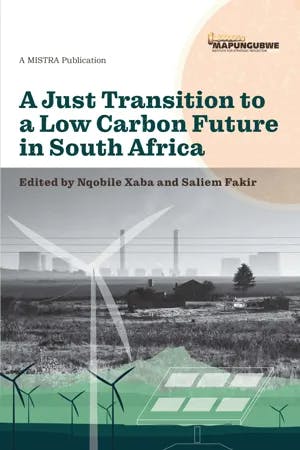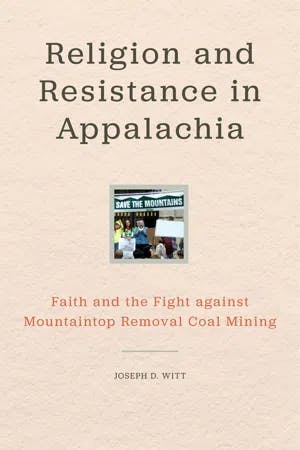What is the Just Transition?
MA, Sociology (Freie Universität Berlin)
Date Published: 11.01.2024,
Last Updated: 21.02.2024
Share this article
Defining just transition
The idea of developing a greener economy that uses renewable forms of energy and causes less environmental degradation may seem like a positive to most. After all, doing so is a necessary prerequisite to combating climate change and ensuring a sustainable future. But for millions of workers around the world, the notion of transforming our energy sector also signifies dead industries, lost jobs, and future economic precarity. While this doesn’t mean we should abandon the objective of pursuing a carbon-neutral economy, it is important that such a transition takes into account the implications it could have for those who rely on jobs in coal mining, natural gas extraction, or other energy-intensive industries for their livelihoods. This is what the just transition is all about.
As scholar-activist Karen Bell points out in Working-Class Environmentalism, these concerns are often left out of mainstream environmentalism:
‘Environmental classism’ refers to policies or practices that impact less favourably on working-class individuals and groups with respect to the quality of their living, working and leisure environments. [...] working-class people tend to carry the environmental burdens for society; [...] they are sometimes negatively impacted by environmental policy and alienated by traditional forms of environmentalism; and [...] they have long been, and continue to be, environmentalists, even if they have not been recognised as such. (2019)
Karen Bell
‘Environmental classism’ refers to policies or practices that impact less favourably on working-class individuals and groups with respect to the quality of their living, working and leisure environments. [...] working-class people tend to carry the environmental burdens for society; [...] they are sometimes negatively impacted by environmental policy and alienated by traditional forms of environmentalism; and [...] they have long been, and continue to be, environmentalists, even if they have not been recognised as such. (2019)
The just transition framework was born out of these assertions, and it calls for the development of a green economy that centers working people, helping them to secure new livelihoods and ensuring they too experience the benefits of a green economy. It is a form of working-class environmentalism that emerged from the trade union movement, and it prioritizes social equity for all people as a key part of any truly sustainable future. In this study guide, we will cover the genealogy of the just transition framework, its core tenets, and real-life examples of where it has been used to achieve environmental justice for working-class people.
If you’d like to learn more about other approaches to environmentalism that also center social justice, check out our study guides on political ecology, degrowth, and ecofeminism.
Just transition genealogy
Since its inception, the just transition represents the convergence of working class and environmental justice movements. As Dimitris Stevis, Edouard Morena, and Dunja Krause emphasize in Just Transitions,
Just transition was not the product of theoretical debates over environmental justice or sociotechnical transitions. It was developed during the 1970s and 1980s by workers in response to ‘job blackmail’ from capital and its allies under the increasingly hyperliberal capitalist turn unfolding in the United States. (2019)
Edited by Dimitris Stevis, Edouard Morena, and Dunja Krause
Just transition was not the product of theoretical debates over environmental justice or sociotechnical transitions. It was developed during the 1970s and 1980s by workers in response to ‘job blackmail’ from capital and its allies under the increasingly hyperliberal capitalist turn unfolding in the United States. (2019)
In fact, the just transition framework originated in the 1970s when members of the Oil, Chemical and Atomic Workers Union (OCAW) proposed that a fund be created to help train members for jobs in greener energy sectors:
The idea behind what was eventually called ‘just transition’ was born in the United States, in the 1970s. Most observers agree that it was the brainchild of Tony Mazzocchi – a trade unionist working on occupational safety and health at the Oil, Chemical and Atomic Workers’ Union (OCAW). Just transition, while not initially referred to in those terms, was the product of his determined efforts to reconcile environmental and social concerns. (Stevis, Morena, and Krause, 2019)
From here, labor unions and environmentalists were in closer dialogues with each other about the working class concerns that traditional environmental movements tend to overlook, such as what happens to those in traditional energy sector jobs should these industries be phased out:
The goal was to diffuse unionism within the environmental movement and environmentalism within the union movement. In short, the just transition initiatives of the 1990s did not only target public policy; they also sought to bridge the gaps between workers, environmentalists and communities, and to foster an alternative socioenvironmental politics that valued collective representation by workers and communities around principles of social and environmental justice. (Stevis, Morena, and Krause, 2019)
The framework then began to spread across trade unions and environmental organizations throughout North America, Europe, and beyond. It has since been taken up on an international scale in policy initiatives, academic research, and the contemporary climate justice movement. Yet, at its core, the framework remains one championed by grassroots organizers, and by those closest to these issues.
Just transition characteristics
Let’s explore some of the main tenets of the just transition framework.
Workers’ rights
Naturally, workers’ rights are at the heart of the just transition, distinguishing it from other environmental movements. Although working-class people probably don’t immediately come to mind when you think of environmental activists, Bell argues that
It is important to think about how to end environmental classism and embrace working-class environmentalism, firstly, so that working-class people do not have to be killed or injured unnecessarily and, secondly, because it will enable us to achieve sustainability, or a habitable planet for all humans in the long term. (2019)
The just transition facilitates this people-centered approach to environmentalism by prioritizing funds and resources for training and rehiring workers in greener sectors as a key component of any kind of larger environmental policy initiative. It also holds labor unions as key actors in navigating this transition through collective bargaining with governments and corporations.
Crucially, this framework doesn’t merely regard workers as victims of a green transition. Rather, the just transition regards working class people as being at the forefront of making environmental sustainability a reality. It maintains that workers are ultimately the ones who actually carry out activities across all sectors of society from energy to transportation to agriculture —- and, therefore, it is crucial to gain their support.
Community engagement
Beyond the realm of the workplace, another key dimension of facilitating a just transition is involving the wider community where natural resource extraction takes place. For example, many towns have cropped up around industries like coal mining and natural gas extraction. When these environmentally harmful operations are eventually finished, it can have detrimental effects on the socioeconomic life of residents who rely on these industries for income. The same goes for the fact that many intensive industries produce environmental hazards that are also harmful to the health of those living in surrounding areas (see Earl Boebert and James M. Blossom, Deepwater Horizon, 2016; Lois Marie Gibb, Love Canal, 2011).
Thus, it is equally essential within the just transition framework to engage the local community in developing a common vision and goals for land use and natural resource management. In Diversity and Inclusion in Environmentalism, Karen Bell describes a number of different examples of what this can look like based on her work as a community development worker:
This included making local derelict land safe and accessible for play and leisure […], setting up a food coop so that local people could access cheap, healthy food; organising clean-ups of the local green spaces […] organising consultations on regeneration developments; campaigning for accessible public transport (e.g. South Gloucestershire Disability Equality Forum); and campaigning for tree planting… (2021)
Karen Bell
This included making local derelict land safe and accessible for play and leisure […], setting up a food coop so that local people could access cheap, healthy food; organising clean-ups of the local green spaces […] organising consultations on regeneration developments; campaigning for accessible public transport (e.g. South Gloucestershire Disability Equality Forum); and campaigning for tree planting… (2021)
As opposed to top-down approaches that alienate or even villainize working class people, just transition advocates believe that inviting the local community to lead the way on these projects will have the best and most sustainable outcome for any green transition.
Politics and policy
In general, the just transition framework challenges the top-down approach to climate policy that can be seen in other environmental frameworks such as the circular economy. Instead, it calls upon grassroots organizing to influence and shape political decisions around climate justice. Therefore, it advocates for a politics from below — without fully abandoning the importance of policy as an expression of collective will around climate action. As Benjamin Max Goloff argues, the just transition also represents the intersection of climate issues with other forms of struggle facing oppressed peoples:
The era of technocratic climate politics in the United States – iconized by white men addressing “the climate” narrowly as an environmental issue, communicated through slideshows of melting glaciers and drowning polar bears – is being usurped. In its place, climate justice (CJ) movements are reclaiming the politics of climate change through grassroots organizing led by Indigenous people, Black and Brown people, immigrants, workers, women, queer people, and people of different abilities on the frontlines of climate impacts and extractive industries. (in Environmental Justice in the Anthropocene, 2021)
Edited by Stacia Ryder et al.
The era of technocratic climate politics in the United States – iconized by white men addressing “the climate” narrowly as an environmental issue, communicated through slideshows of melting glaciers and drowning polar bears – is being usurped. In its place, climate justice (CJ) movements are reclaiming the politics of climate change through grassroots organizing led by Indigenous people, Black and Brown people, immigrants, workers, women, queer people, and people of different abilities on the frontlines of climate impacts and extractive industries. (in Environmental Justice in the Anthropocene, 2021)
This convergence is also a strength because it means that there is the potential to build broad-based coalitions of people, which are collectively able to influence climate policy in conjunction with addressing issues that affect marginalized groups. For example, in a just transition, climate policy would also involve restoring indigenous land sovereignty, protecting lands — and their inhabitants — from building highways or pipelines, and ensuring that communities are safe from environmental hazards.
(Read more about the concept of the Anthropocene in our study guide, “What is the Anthropocene?”)
Environmental justice and sustainability
Proponents of the just transition emphasize that these occupational hazards, along with environmental degradation of surrounding communities should be key points of contention raised by environmentalist movements. For example, in Antadze’s chapter, “The Selective Invisibility of Oil and Climate Justice in the Anthropocene and Beyond,” he observes that,
For those communities at the forefront of oil extraction, processing, transportation, and disposal, oil is an indispensable part of their everyday material experiences. In those communities oil has visible and tangible consequences, including environmental degradation, livelihood disruption, health impacts, forcible displacement, and human rights violations. (Antadze, in Environmental Justice in the Anthropocene, 2021)
These concerns extend across environmentally harmful industries around the world. For example, garment workers in Bangladesh, cobalt miners in the Congo, and the feminized labor force in maquiladoras often experience harm to their health due to the conditions of their work. Therefore, under the just transition framework, concerns of environmental justice and environmental sustainability go hand in hand.
Just transition in action: real-world examples
South Africa
South Africa is one of the most well-known cases of just transition in action. Not only is it a country where 90% of electricity is powered by coal, but it is also a place with a long history of racial apartheid. Policymakers knew, therefore, that decarbonizing must be accompanied by a clear plan for economic and social recovery. As cited in South Africa’s Integrated Resource Plan,
The timing of the transition to a low carbon economy must be in a manner that is socially just and sensitive to the potential impacts on jobs and local economies. It is in this context that engagements at global forums such as the G20 refer to ‘Energy Transitions’ and not ‘Energy Transition’ as a recognition that countries are different, and their energy transition paths will also be different due to varying local conditions. (quoted in Nqobile Xaba and Saliem Fakir, A Just Transition to a Low Carbon Future in South Africa, 2022)
The timing of the transition to a low carbon economy must be in a manner that is socially just and sensitive to the potential impacts on jobs and local economies. It is in this context that engagements at global forums such as the G20 refer to ‘Energy Transitions’ and not ‘Energy Transition’ as a recognition that countries are different, and their energy transition paths will also be different due to varying local conditions. (quoted in Nqobile Xaba and Saliem Fakir, A Just Transition to a Low Carbon Future in South Africa, 2022)
In South Africa, just transition principles manifest in initiatives to train and reskill workers for jobs in the green energy sector and government provisioning of bridge funds to make up for money lost in tax revenue from the coal industry. This nation also works in collaboration with local communities and workers' unions to develop a just vision for a sustainable future.
Appalachia, U.S.
Appalachia is another coal-dependent region marked by high concentrations of poverty and has also seen a grassroots environmental movement with features of a just transition. Particularly in light of increasingly harmful forms of coal mining — including mountaintop removal — the local population has mobilized to find socially just alternatives. This has led to a convergence between labor, environmental justice, and even faith-based movements. Joseph D. Witt recounts one example of the success of these struggles,
[…] the Earth Quakers initiated their “Power Local Green Jobs” campaign directed at Philadelphia-based PECO Energy, encouraging the company to transition toward locally produced solar power, “benefiting poor communities and communities of color. (Religion and Resistance in Appalachia, 2016)
Joseph. D. Witt
[…] the Earth Quakers initiated their “Power Local Green Jobs” campaign directed at Philadelphia-based PECO Energy, encouraging the company to transition toward locally produced solar power, “benefiting poor communities and communities of color. (Religion and Resistance in Appalachia, 2016)
In addition, the Appalachian Regional Commission has been established to facilitate efforts to diversify the economy by cultivating alternative energy sources such as wind and solar power. Similar to South Africa, there has also been a concerted effort to upskill and retrain coal miners for other careers in the green energy sector. Finally, the Just Transition Fund in Appalachia has featured a significant emphasis on community revitalization in areas that have been damaged by mountaintop removal, through investing in infrastructure as well as healthcare and education for local populations.
Río Negro, Argentina
In Argentina there have been initiatives to transition away from fracking in Northern Patagonia. Not only has this been disastrous for the environment but also for the socioeconomic outlook of the local communities that are left to deal with the consequences of this ecologically destructive process. When the government set plans to frack for shale gas and oil, locals set up the Post and Petroleum Roundtable (in Spanish, called Mesa for short). As described in the chapter, “What transition? Collectively imagining a just and low-carbon future for Río Negro, Argentina,”
Contrary to those who are pushing for the development of unconventional hydrocarbons, the Mesa believes that achieving a truly sustainable transition inevitably requires popular engagement and empowerment. Its activities are also informed by more theoretical and conceptual debates on low-carbon transitions and development. Chief among these are discussions around the just transition concept and related principles aimed at promoting and guiding a transition that minimises the labour and social impacts of the transformation or closure of unsustainable economic activities. (Mullally, Christiansen, and Maffei, in Just Transitions, 2019)
In order to achieve these goals, organizers focused on mobilizing the population towards alternative futures by building alternate narratives to those being pushed by corporations and government officials about the short-term economic benefits of implementing the fracking projects. They were ultimately successful not only in resisting the fracking project itself but mobilizing and elevating the communities on the front lines to become active stewards of the environment.
Future outlook
The just transition offers an expanded framework of traditional environmentalism by integrating social concerns, workers' rights, and local community engagement into a vision for a sustainable future. It argues that environmental justice is a class issue and that workers are actually key agents in bringing about a green energy transition — even if they may have been excluded from this discourse in the past. By involving local community members in decision-making and creating initiatives to retrain workers for jobs in the green energy sector, we can ensure that regular people also reap the benefits of green technology.
The just transition was first introduced by labor unionists in the 1980s, and it is gradually catching on. Proponents of the just transition such as Karen Bell also emphasize that this framework is not one that belongs to academic circles, but to working class people who apply it every day in the field. Ensuring the future success of a just transition will require close collaboration between local stakeholders, policymakers, and unions. If widely adopted, the just transition offers a promising blueprint for socially inclusive and environmentally just strategies for fighting climate change.
Further reading on Perlego
Dilemmas of Energy Transitions in the Global South (2021) by Ankit Kumar, Johanna Höffken, and Auke Pols
A Just Transition: Making Energy Poverty History with an Energy Mix (2023) by N.J. Ayuk
Just Transitions: Gender and Power in India's Climate Politics (2023) by Seema Arora-Jonsson, Kavya Michael, and Manish Kumar Shrivastava
What is the just transition in simple terms?
What is an example of just transition in practice?
Who are figures associated with the just transition?
Bibliography
Antadze, N. (2021) “The Selective Invisibility of Oil and Climate Justice in the Anthropocene and Beyond,” in Ryder, S. et al. (eds.) Environmental Justice in the Anthropocene: From Unjust Presents to Just Futures. Routledge. Available at: https://www.perlego.com/book/2489558/environmental-justice-in-the-anthropocene-from-unjust-presents-to-just-futures-pdf
Bell, K. (2021) Diversity and Inclusion in Environmentalism. Routledge. Available at: https://www.perlego.com/book/2426809/diversity-and-inclusion-in-environmentalism-pdf
Bell, K. (2019) Working-Class Environmentalism: An Agenda for a Just and Fair Transition to Sustainability. Palgrave Macmillan. Available at: https://www.perlego.com/book/3493762/workingclass-environmentalism-an-agenda-for-a-just-and-fair-transition-to-sustainability-pdf
Boebert, E., and Blossom, J. M. (2016) Deepwater Horizon: A Systems Analysis of the Macondo Disaster. Harvard University Press. Available at:
https://www.perlego.com/book/3119794/deepwater-horizon-a-systems-analysis-of-the-macondo-disaster
Gibb, L. M. (2011) Love Canal and the Birth of the Environmental Health Movement. Island Press. Available at:
https://www.perlego.com/book/3287492/love-canal-and-the-birth-of-the-environmental-health-movement
Goloff, B. M. (2021) “‘Building the Bigger We’ for climate just” in Ryder, S. et al. (eds.) Environmental Justice in the Anthropocene: From Unjust Presents to Just Futures. Routledge. Available at: https://www.perlego.com/book/2489558/environmental-justice-in-the-anthropocene-from-unjust-presents-to-just-futures-pdf
Morena, E., Krause, D., and Stevis, D. (eds.)(2019) Just Transitions: Social Justice in the Shift Towards a Low-Carbon World. Pluto Press. Available at: https://www.perlego.com/book/1322996/just-transitions-social-justice-in-the-shift-towards-a-lowcarbon-world-pdf
Mullally, M. A., Christiansen, F. C., and Maffei, L. (2019) “What transition? Collectively imagining a just and low-carbon future for Río Negro, Argentina,” in Morena, E., Krause, D., and Stevis, D. (eds.) Just Transitions: Social Justice in the Shift Towards a Low-Carbon World. Pluto Press. Available at: https://www.perlego.com/book/1322996/just-transitions-social-justice-in-the-shift-towards-a-lowcarbon-world-pdf
Xaba, N. and Fakir, S. (2022) A Just Transition to a Low Carbon Future in South Africa. The Mapungubwe Institute for Strategic Reflection (MIST). Available at: https://www.perlego.com/book/3741955/a-just-transition-to-a-low-carbon-future-in-south-africa-pdf
Witt, J.D. (2016) Religion and Resistance in Appalachia: Faith and the Fight Against Mountaintop Removal Coal Mining. The University Press of Kentucky. Available at: https://www.perlego.com/book/874454/religion-and-resistance-in-appalachia-faith-and-the-fight-against-mountaintop-removal-coal-mining-pdf
MA, Sociology (Freie Universität Berlin)
Lily Cichanowicz has a master's degree in Sociology from Freie Universität Berlin and a dual bachelor's degree from Cornell University in Sociology and International Development. Her research interests include political economy, labor, and social movements. Her master's thesis focused on the labor shortages in the food service industry following the Covid-19 pandemic.






